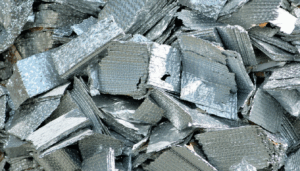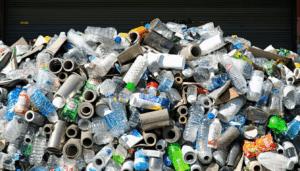In a significant shift toward sustainability, the American aluminum and metal recycling industry is experiencing unprecedented growth and technological advancement. Industry leaders are implementing innovative processes that promise to reshape how metals are reclaimed and repurposed across the United States. These developments come as demand for recycled materials reaches record highs amid growing environmental concerns and resource scarcity.
Recycling Rates Reach Record Highs as New Technologies Emerge
The metal recycling landscape in America has transformed dramatically over the past year. According to industry data, aluminum recycling rates have increased by 17% nationwide, with particularly strong performance in urban centers. This surge coincides with the implementation of advanced sorting technologies at major recycling facilities.
“We’re seeing a fundamental shift in how recycling is approached in this country,” said Robert Keller, CEO of American Metals Recovery. “The combination of AI-powered sorting systems and consumer awareness has created perfect conditions for growth in the metal and aluminum recycling sector.”
These technological advancements include optical sorting systems that can identify and separate different metal types with 99.7% accuracy, significantly reducing contamination issues that previously plagued the industry. Major recycling centers in Chicago, Houston, and Los Angeles have already implemented these systems, with plans for nationwide expansion by year-end.
Economic Impact Drives Industry Expansion
The economic benefits of metal and aluminum recycling have become increasingly apparent to both businesses and policymakers. Recent market analysis indicates that the recycled aluminum industry now contributes approximately $36 billion annually to the U.S. economy while supporting over 160,000 jobs.
Jennifer Martinez, Chief Economist at the National Association of Metal Recyclers, explained: “Recycling aluminum requires only 5% of the energy needed to produce new aluminum from bauxite ore. This translates to substantial cost savings for manufacturers and creates a compelling business case for increased recycling infrastructure investment.”
Several major corporations have responded to these economic incentives. Ford Motor Company recently announced a partnership with three leading recycling firms to source 40% of its aluminum from recycled materials by 2026. Similarly, beverage giant Coca-Cola has pledged to increase the recycled content in its aluminum cans to 50% by 2025.
Environmental Benefits Drive Consumer Participation
Environmental considerations remain a powerful motivator for both industry and consumer participation in metal and aluminum recycling programs. Each ton of recycled aluminum prevents approximately 9 tons of CO2 emissions compared to producing new aluminum.
“Consumers are increasingly making purchasing decisions based on sustainability metrics,” said Dr. Sarah Williams, environmental scientist at the Green America Institute. “Companies that demonstrate commitment to metal and aluminum recycling are seeing measurable improvements in brand perception and customer loyalty.”
Community-based initiatives have also played a crucial role in boosting participation rates. The “Recycle Right” campaign, launched in 30 major cities this spring, has already increased aluminum collection by 23% in participating communities through educational outreach and incentive programs.
Future Outlook and Challenges
Despite significant progress, challenges remain for the metal and aluminum recycling industry. Collection infrastructure in rural areas continues to lag behind urban centers, and contamination issues persist in some regions. Additionally, market volatility for recycled materials presents ongoing concerns for industry stability.
Industry leaders are addressing these challenges through collaborative approaches. The recently formed Metal Recycling Consortium, comprising 27 major recyclers and manufacturers, aims to standardize practices and stabilize markets through long-term purchasing agreements.
“The future of metal and aluminum recycling in America depends on our ability to create consistent, high-quality recycled materials that manufacturers can rely on,” said Thomas Reynolds, Director of the Consortium. “We’re making tremendous progress, but continued investment in infrastructure and technology will be essential.”
FAQ: Metal and Aluminum Recycling
What items contain recyclable aluminum?
Common items include beverage cans, food containers, aluminum foil, window frames, and automotive parts.
How much energy does aluminum recycling save?
Recycling aluminum saves approximately 95% of the energy required to produce new aluminum from raw materials.
Can all types of metals be recycled together?
No, different metals require separate recycling processes. Most recycling facilities sort ferrous metals (containing iron) from non-ferrous metals like aluminum, copper, and brass.
What is the current value of recycled aluminum?
Prices fluctuate based on market conditions, but recycled aluminum currently trades at approximately $0.50-$0.65 per pound for clean, sorted material.
How can businesses improve their metal recycling practices?
Businesses should implement separate collection systems for different metals, train employees on proper sorting, and partner with specialized recycling services that can handle commercial volumes.




